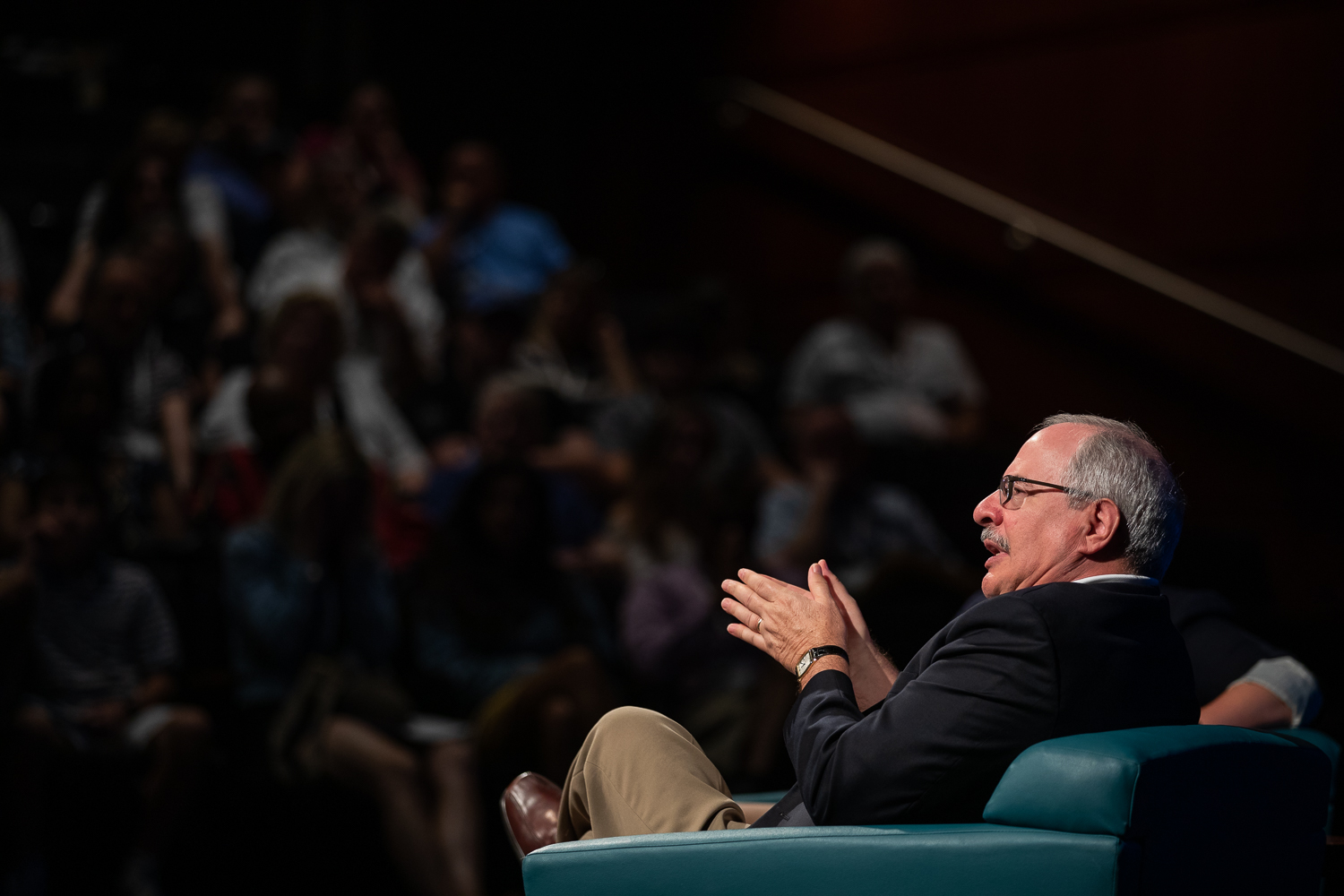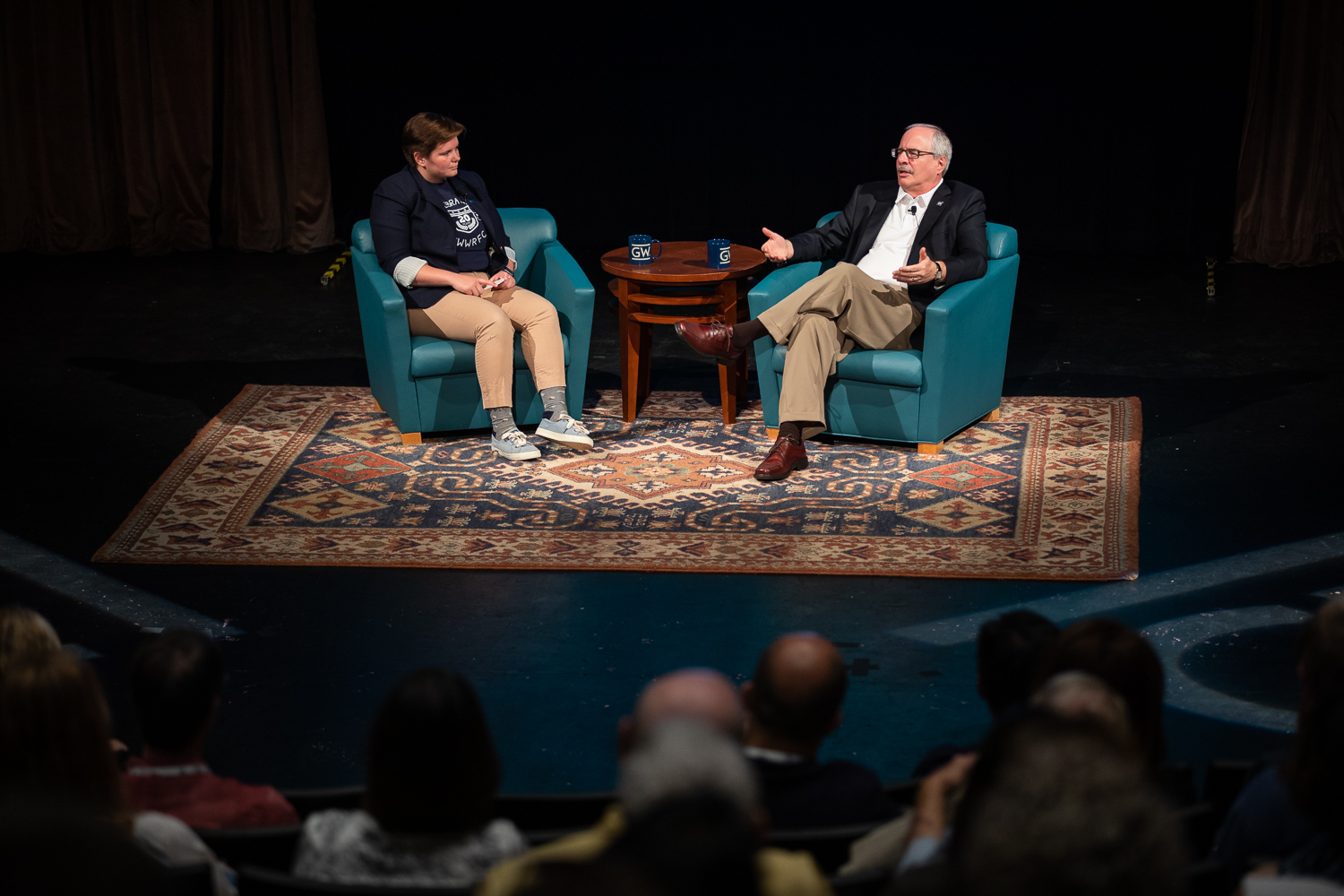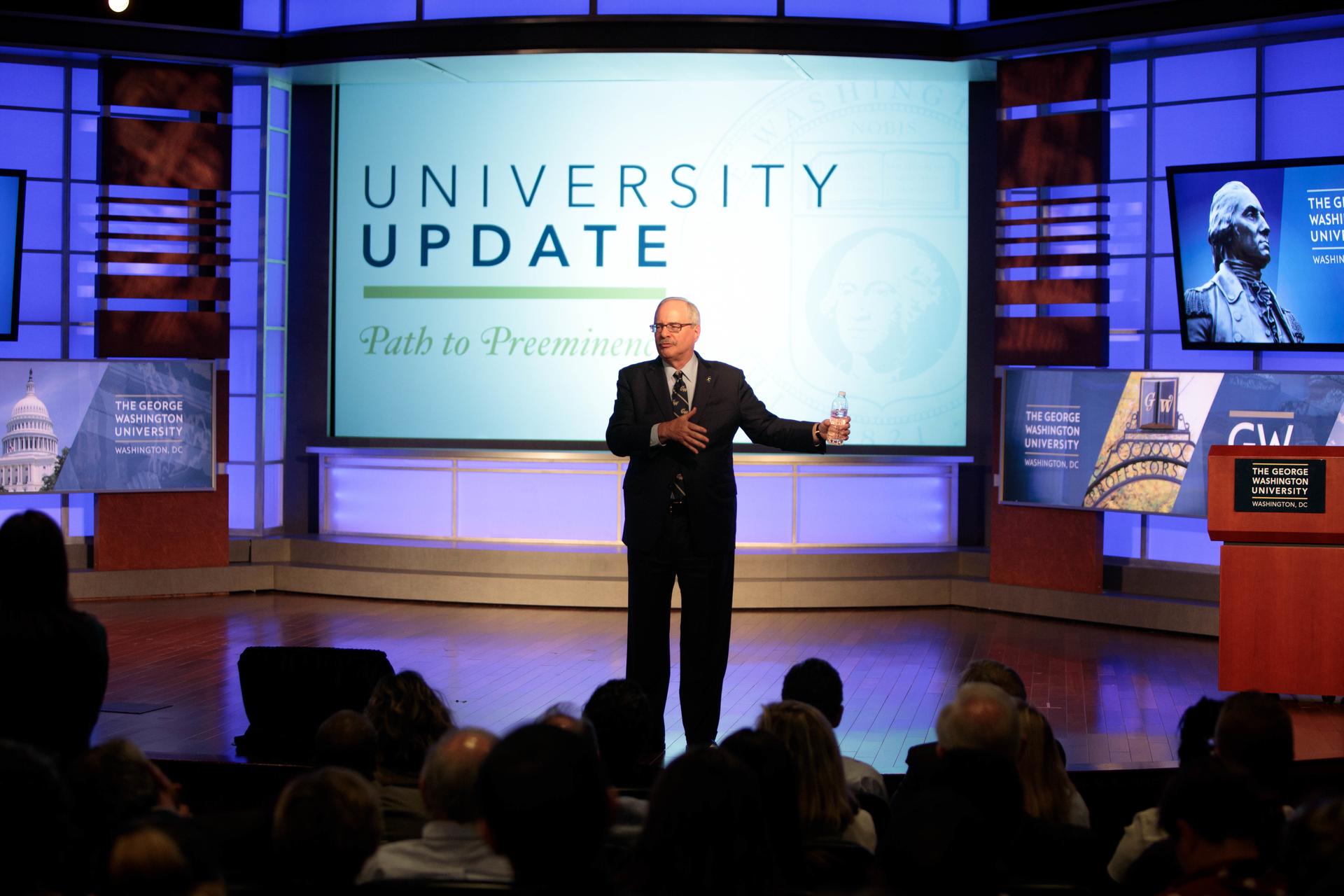By Kristen Mitchell
George Washington University parents, students and alumni had the opportunity to ask President Thomas LeBlanc a wide range of questions as they gathered to celebrate Colonials Weekend. The questions focused largely on the student experience and the university’s strategic plan.
Dr. LeBlanc shared his vision for making GW a preeminent comprehensive global research university at the event, held at the Marvin Center Betts Theatre on Saturday. Student Association President SJ Matthews moderated the discussion, which included a mix of pre-submitted questions and questions from the audience.
Here are some key takeaways from the discussion:
Enhancing the Student Experience
Improving the undergraduate student experience has been one of Dr. LeBlanc’s primary goals since he arrived at the university. GW is taking steps to ensure the needs of students and their families are met, which included launching the new Student Services Hub, investing $10 million to update facilities over the summer and reducing or eliminating fees for services like laundry, printing and venue rentals.
“When I arrived, I heard from the students there were things we could do to make it a better experience for them,” he said. “I often say that those of us who work at the university know a lot about it, but we don’t experience it as students. Only students really experience the university in that way.”
Building a Comprehensive University
The university aims to increase its commitment to STEM, specifically by increasing the percentage of undergraduate students who complete a STEM major, from 19 percent to 30 percent. The university continues to see the power of science and technology to revolutionize the way we live our lives and how we do our work, Dr. LeBlanc said.
GW has put a greater emphasis on STEM education by making it easier for students to double major in a STEM field, creating a Python for All course that gives students of any discipline the opportunity to acquire computer programming skills, and making it possible for undergraduates to take 18 credit hours in a semester. Learning these skills will give students an edge in the job market, Dr. LeBlanc said.
“D.C. has historically been a government town but that is shifting with the arrival of Amazon headquarters,” he said. “It’s sort of put a spotlight on the fact that over the last decade or two, D.C. is evolving into a tech corridor.”
Dr. LeBlanc addressed one alumnus’ concerns about ensuring GW continues to provide a strong and fully funded liberal arts education. He made it clear that an investment in STEM education is an “and” not “or” effort.
Strengthening the STEM enterprise at GW will enhance the university’s prowess in fields like political science, journalism, law and public policy, he said.
Student Voice in the Strategic Plan
The university recently launched a formal strategic planning process to develop its strategic plan. Dr. LeBlanc reassured the GW community that students’ needs and feedback will continue to play an integral role in designing the strategic plan.
Dr. LeBlanc recently held a community-wide discussion, which gave students the opportunity to ask questions about the process. Undergraduate and graduate students also will be well-represented on four committees formed to address the key pillars of the plan: world-class faculty, high-quality undergraduate education, distinguished and distinctive graduate education and high-impact research.
“I’m looking forward to the strategic planning process and looking forward to the conversation that can create,” he said. “GW has a strong foundation, we’re in a good place. This is the best opportunity to think about your future, because when you are thinking about your future in crisis mode, all you can see are the problems, you can’t see the aspirations.
“Because we’re in a good place, I think it’s a particularly apt time to say, ‘OK, everything is on the table, what do we want to be?’”
Members of the GW community are invited to share any ideas they have for the university’s future on the strategic plan website.
Renovating Thurston Hall
One of the most visible changes the university is making to enhance the student experience is the planned renovation of Thurston Hall, which will begin next summer. The hall will house fewer students and allow for more community space, including a three-season atrium, food service and a penthouse student space.
Dr. LeBlanc said he knew soon after he arrived at GW that changes needed to be made to the residence hall, which did not represent “preeminence in freshman residential housing,” he said. Living in Thurston Hall, however, is a defining experience for generations of students.
“The new Thurston will completely reimagine what urban campus living will look like,” he said. “We want to keep everything that is good about the Thurston experience in the new design and fix a lot of the things that I think we can all agree should be fixed.”
Dr. LeBlanc said that first-year students would continue to live in the heart of the Foggy Bottom campus while the building is undergoing renovations, while some upperclassmen will be moved to a university-owned hotel on Washington Circle to accommodate the change. Students are expected to move into Thurston no later than fall 2022 and potentially as early as 2021.

GW President Thomas LeBlanc shared his vision for the university with parents, students and alumni during Colonials Weekend 2019. (Harrison Jones/ GW Today)
Changes to Enrollment
Dr. LeBlanc also was asked about recently announced changes to university enrollment. A July message from the president detailed plans to reduce the on-campus undergraduate student population by 20 percent over the next five years to support making the university “better, not bigger.”
During the past five years, the university has grown the on-campus undergraduate student body significantly, which has stretched the facilities, services, faculty and staff to accommodate that growth, Dr. LeBlanc said. Gradually right-sizing the on-campus undergraduate student population is essential to support the high-quality experience students expect and deserve, he said.
“A lot of the issues we see around the student experience are directly related to the size of the population,” he said. “Wait times for student services, crowding in the residence halls, these are all a function of the size of the undergraduate population.”
Dr. LeBlanc is confident that by working closely with the faculty and the deans, this transition will address some of these challenges.
The Future of ‘Colonials’
A student asked Dr. LeBlanc about the Student Association referendum on the Colonials name earlier this year. Dr. LeBlanc said whether to discontinue using the Colonials moniker is an active conversation on campus and part of a broader national discussion.
While 54 percent of students who voted on the referendum voted to stop using the name, he reminded student leaders at the time that the GW community is much larger than the current students on campus.
“We’re a campus in discussion, and I look forward to that,” he said.




